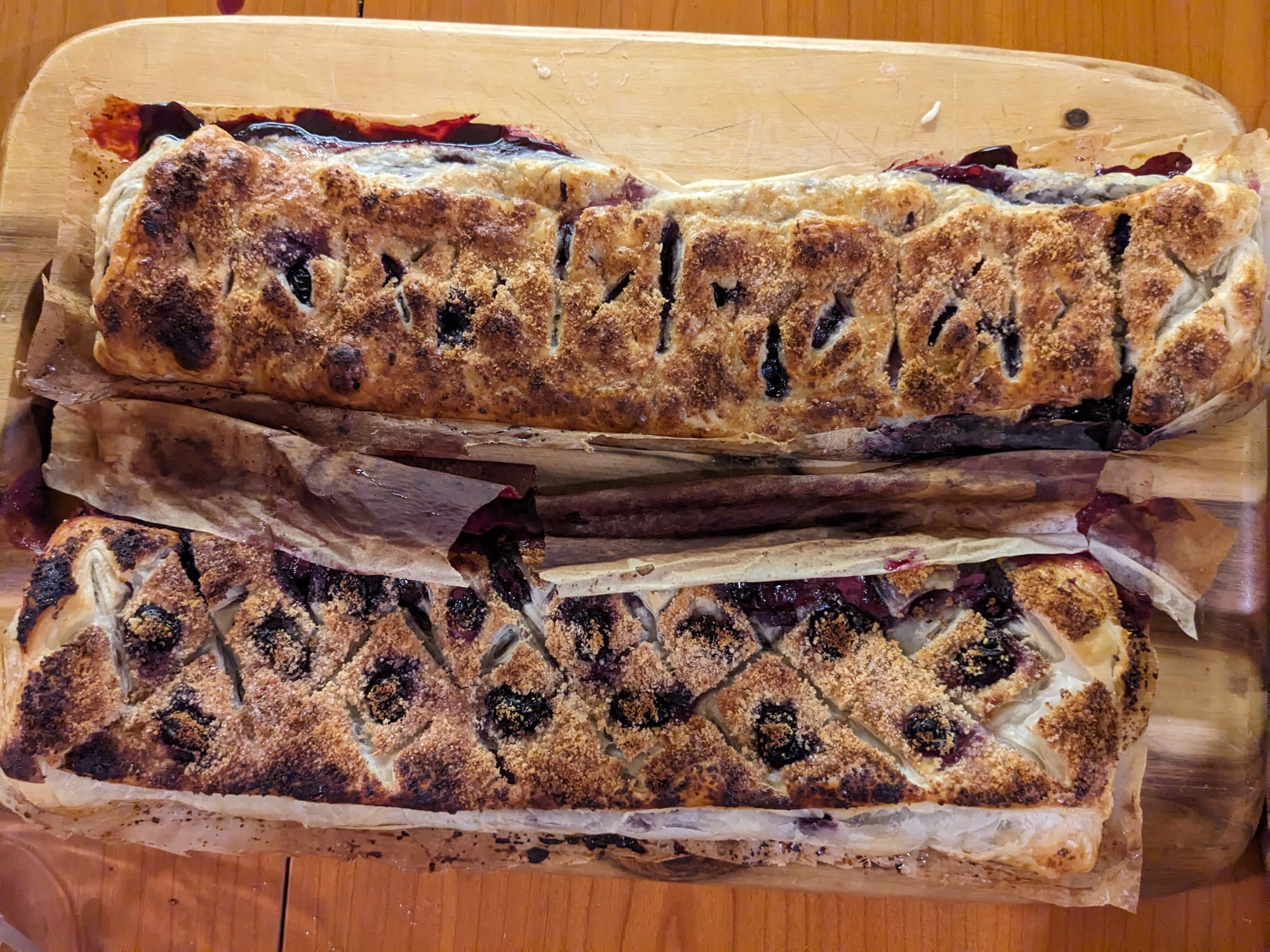Down into the ground
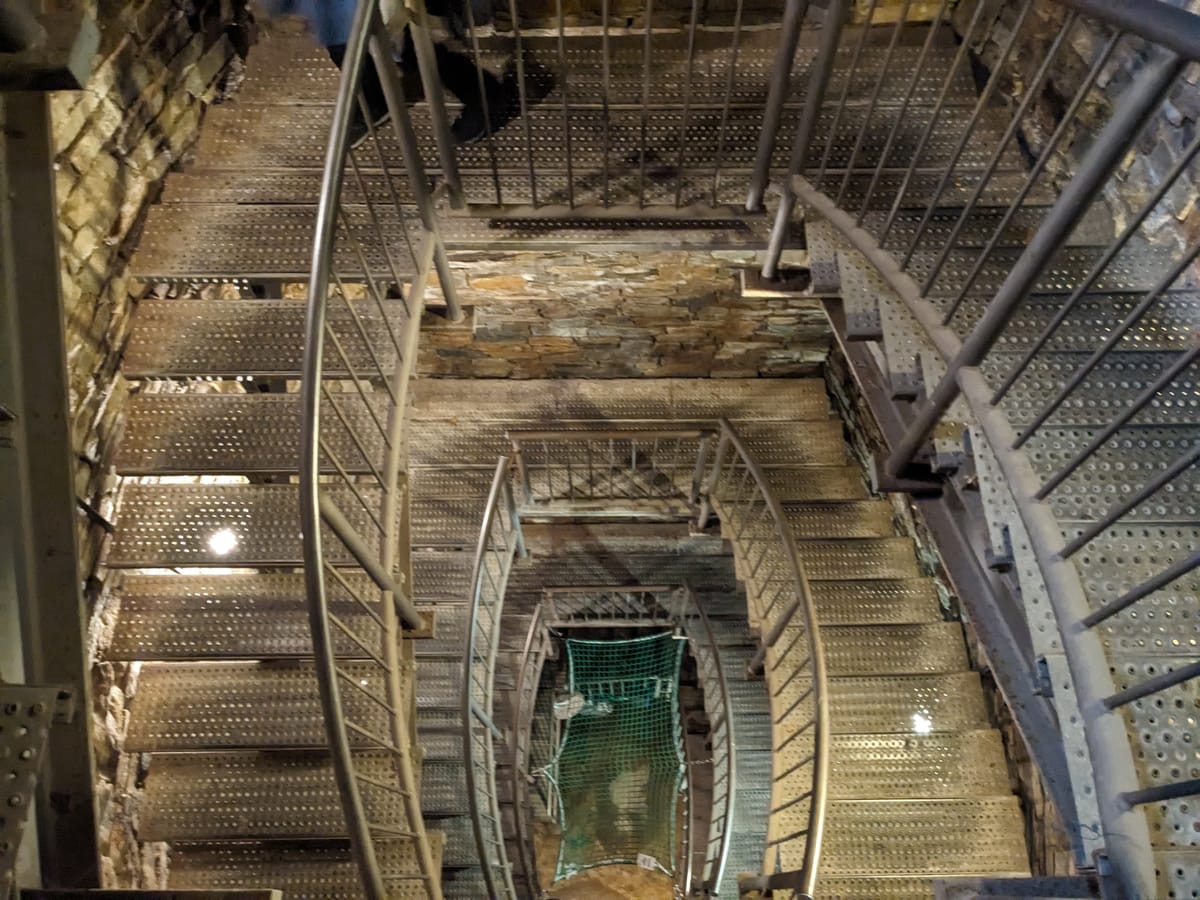
On Sunday afternoon, we braved the freezing rain and headed to the Erzgebirgsmuseum (Ore Mountain Museum) in Annaberg-Buchholz. This included a trip down into the 500-year-old silver mine under the museum.
While the museum (and the tour) were exclusively in German, between Google Translate and on-the-fly commentary by Russ and Ali, we got a good overview of everything. As well as mine information, the museum also had lots of interesting information about regional handicrafts (and their mechanisation).
This included ribbon and lace-making, crochet, wood-carving and metalwork — including the local Schwibbebogen (light arches that we saw everywhere around the area — apparently Russ and Ali have been asked why they don't have one in the window, so strong is the local tradition). The Schwibbebogen originally showed biblical scenes (especially Adam and Eve), but evolved to traditionally show miner scenes with wishes for a safe return from underground (also a common local greeting).
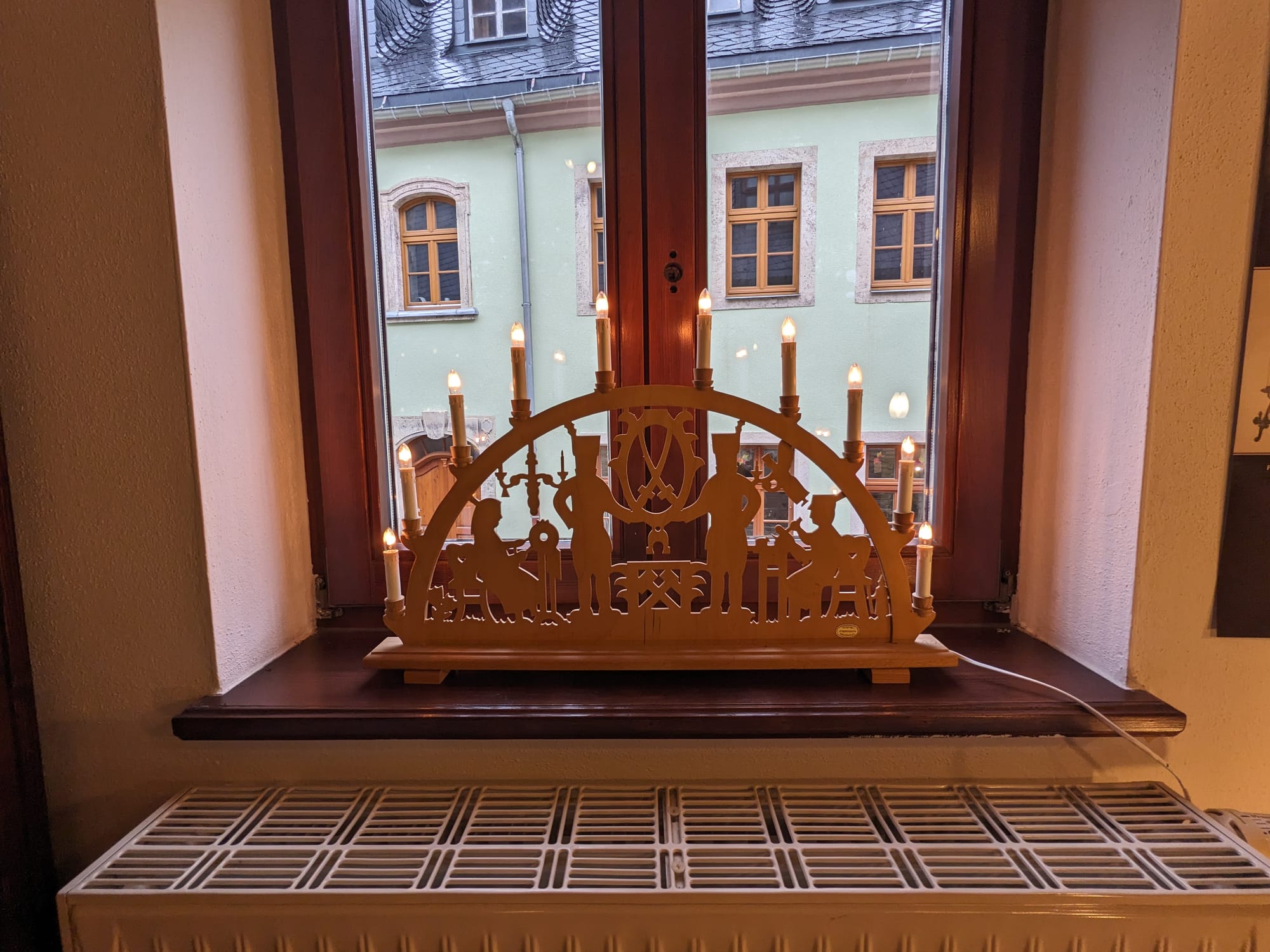
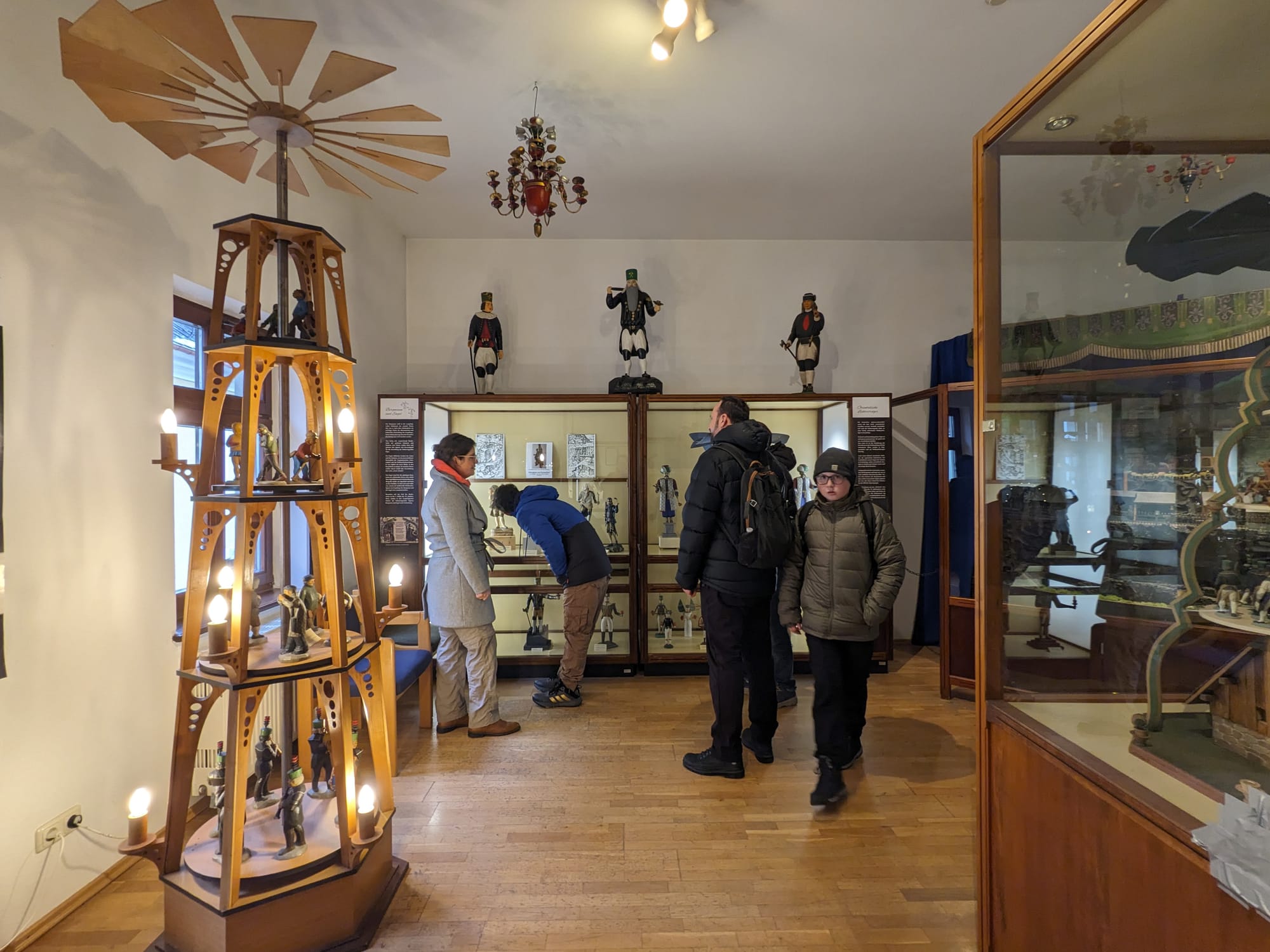
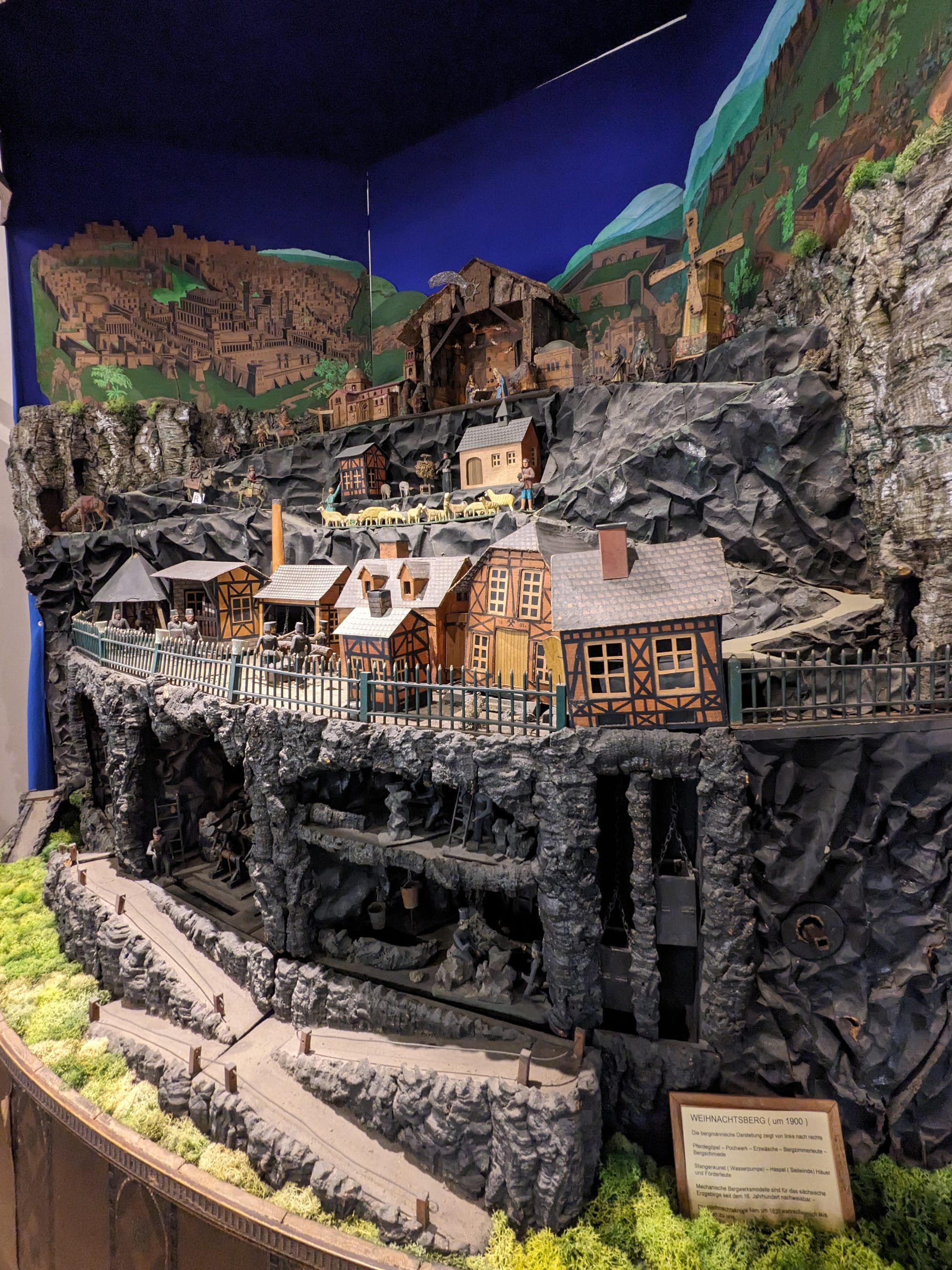
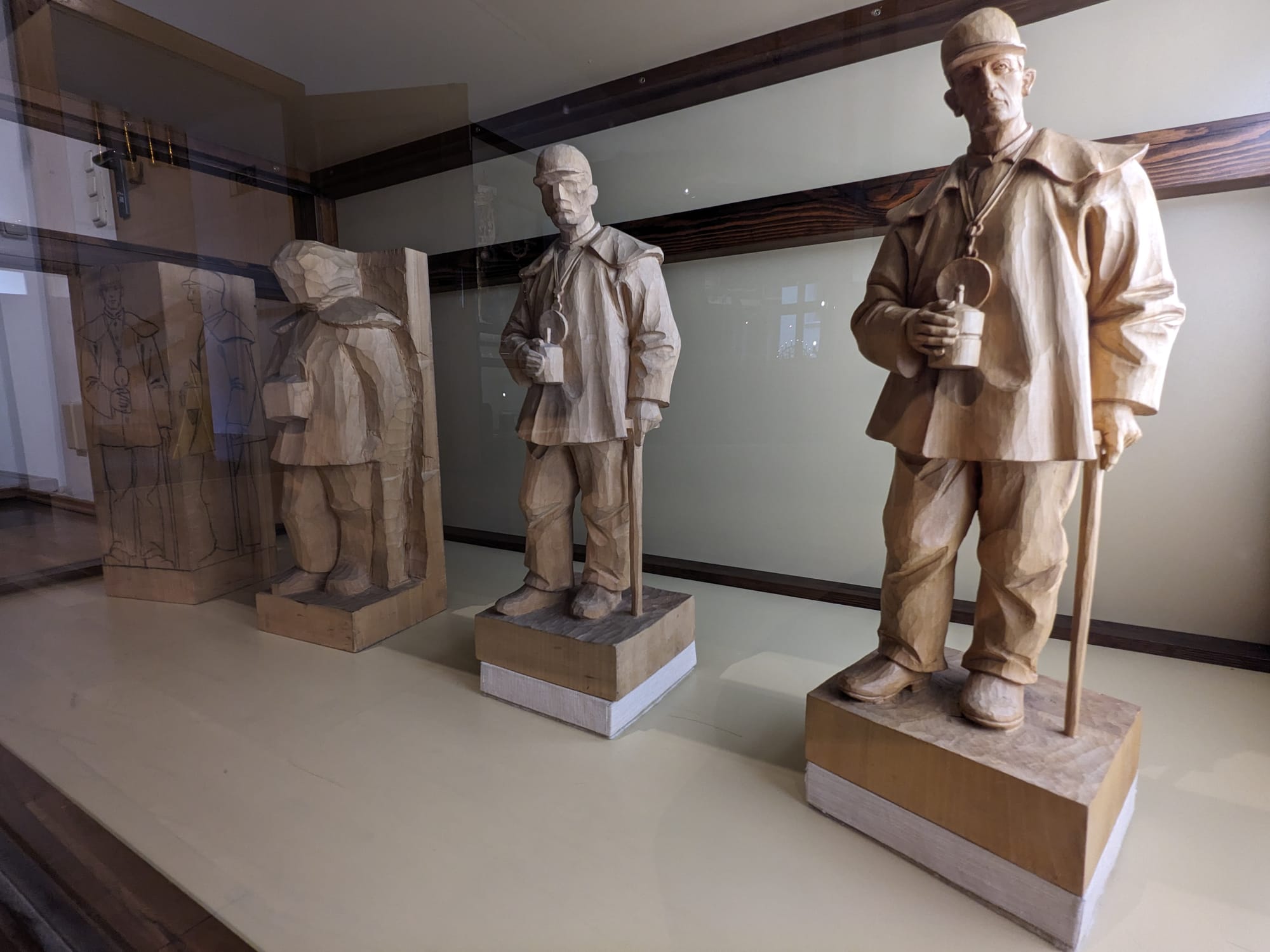
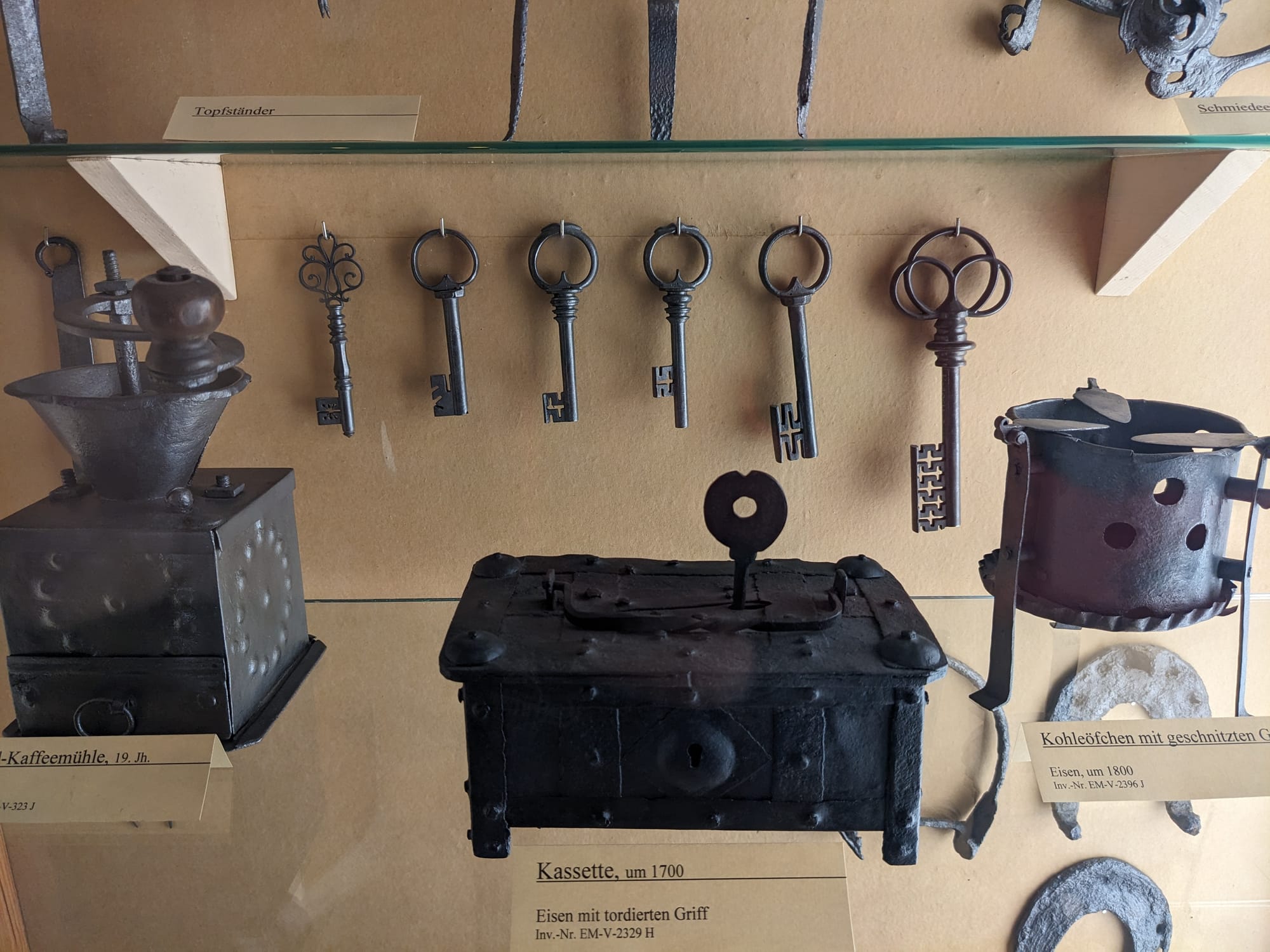
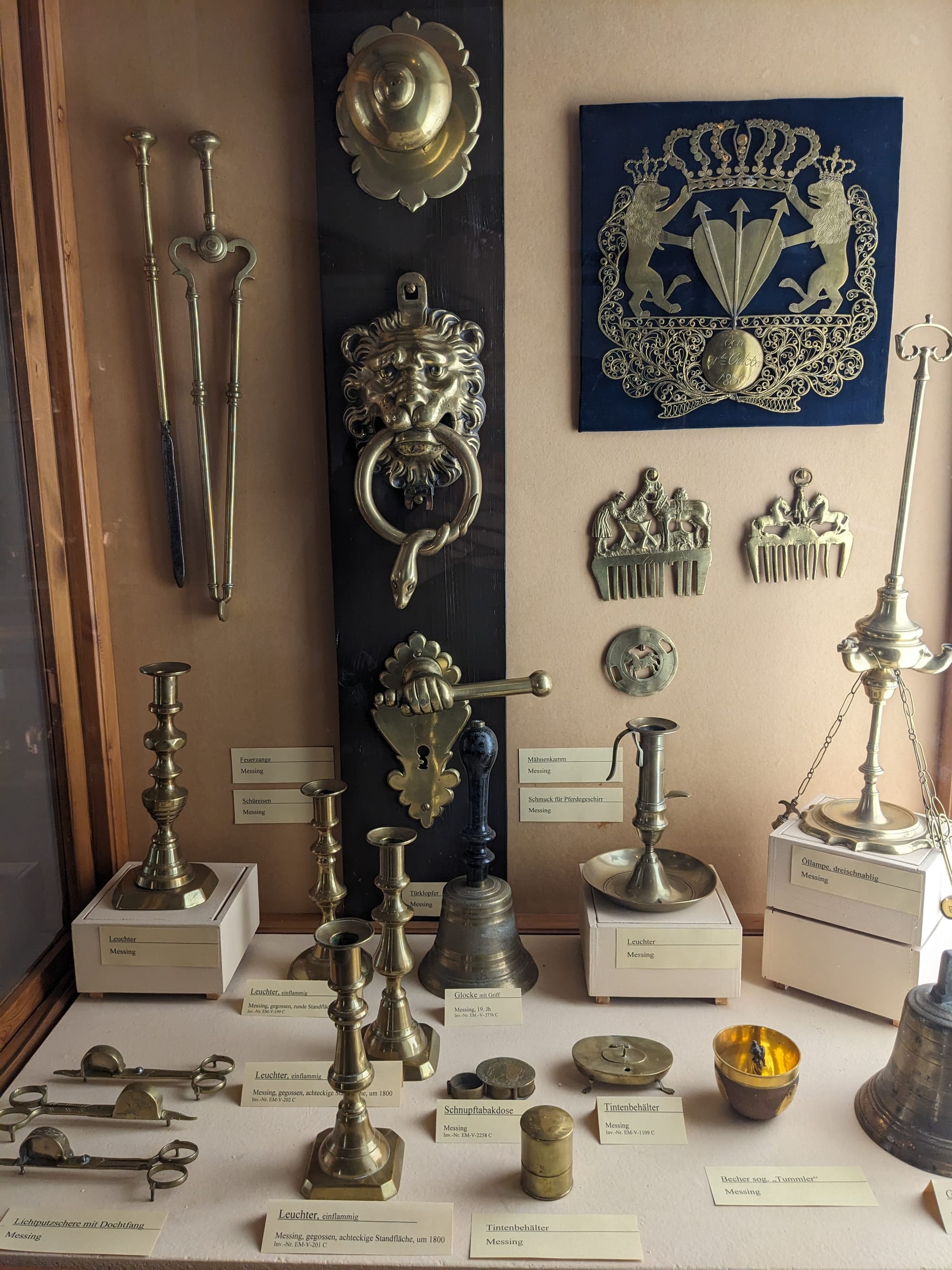
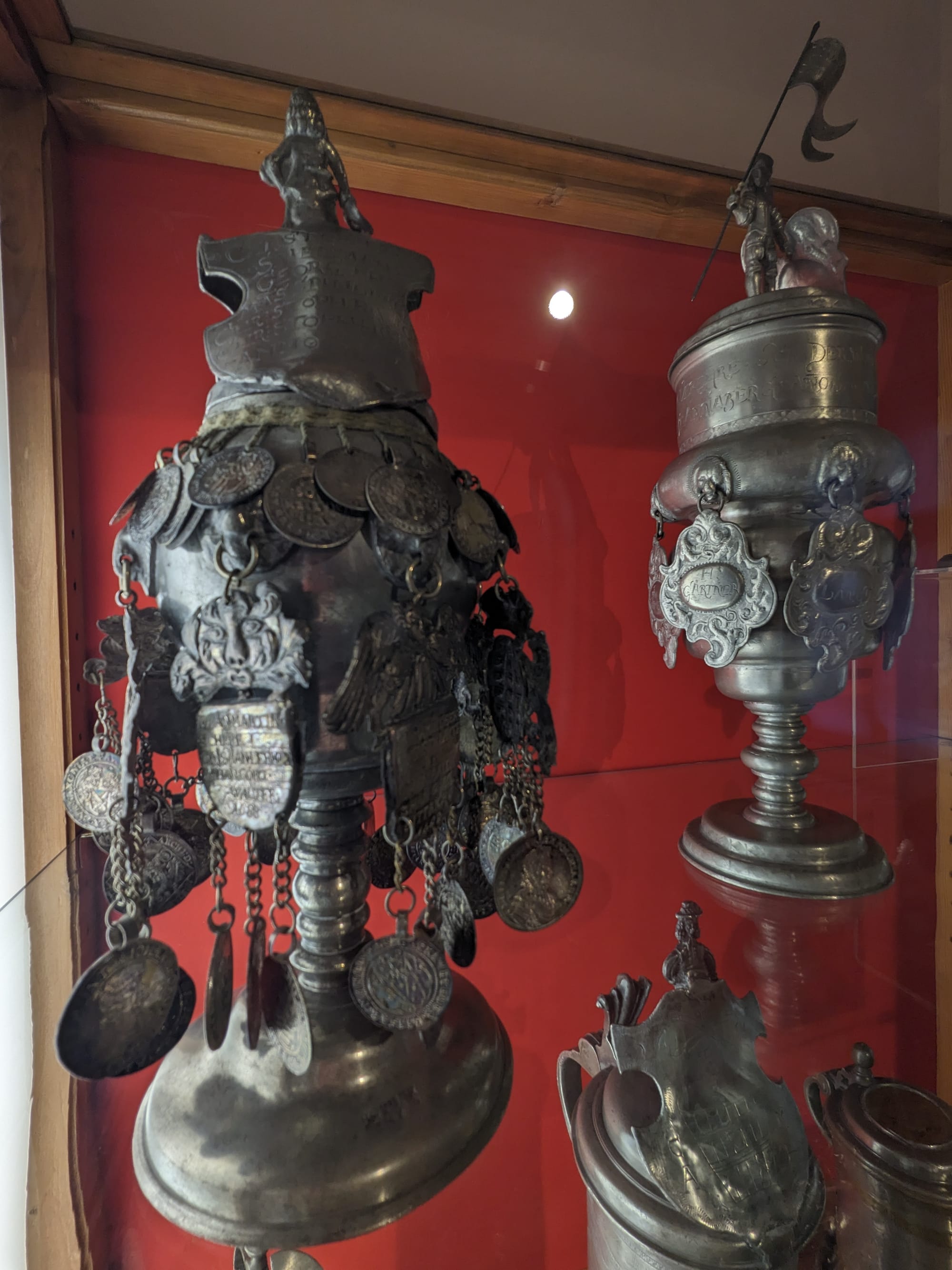
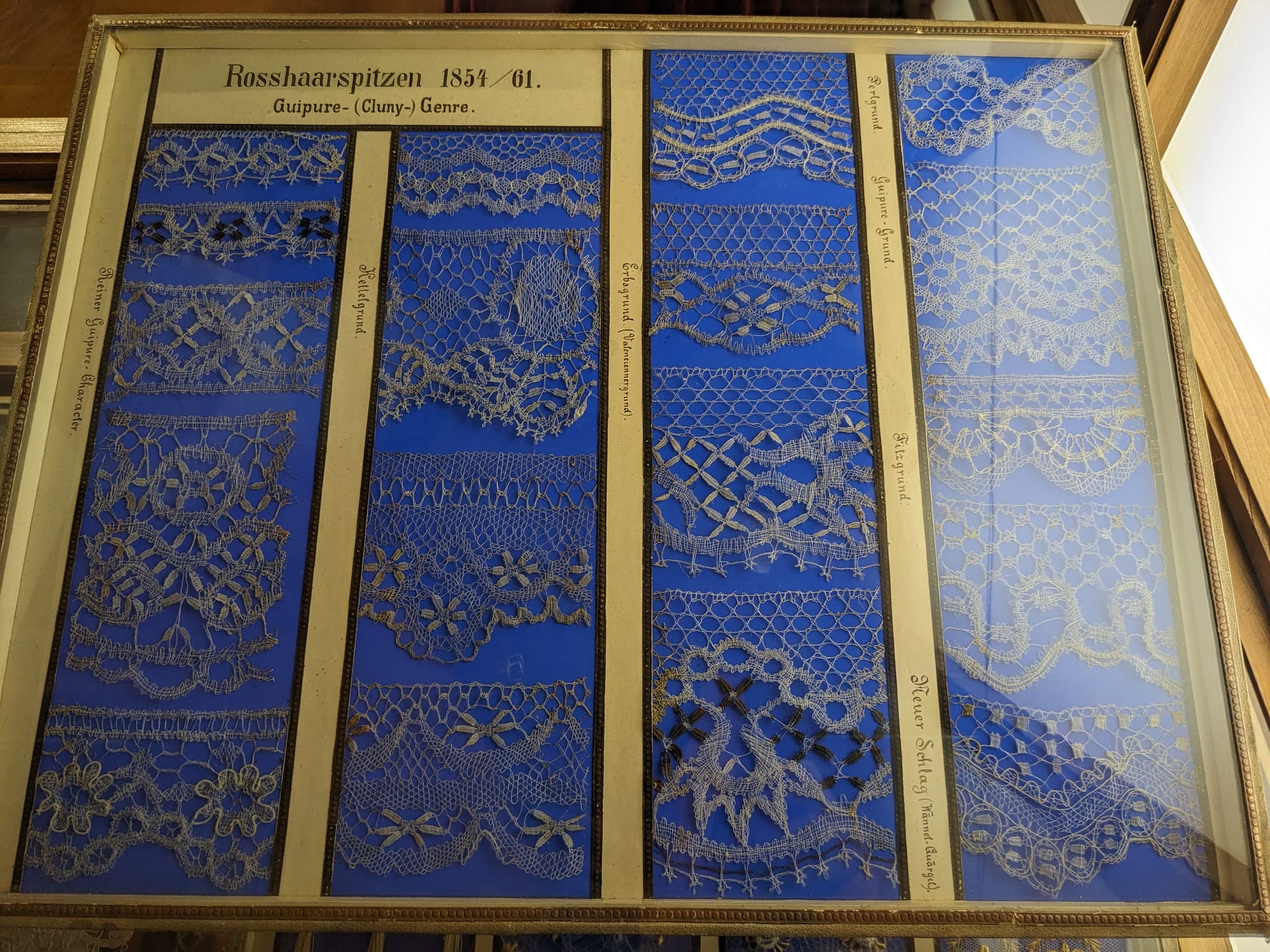
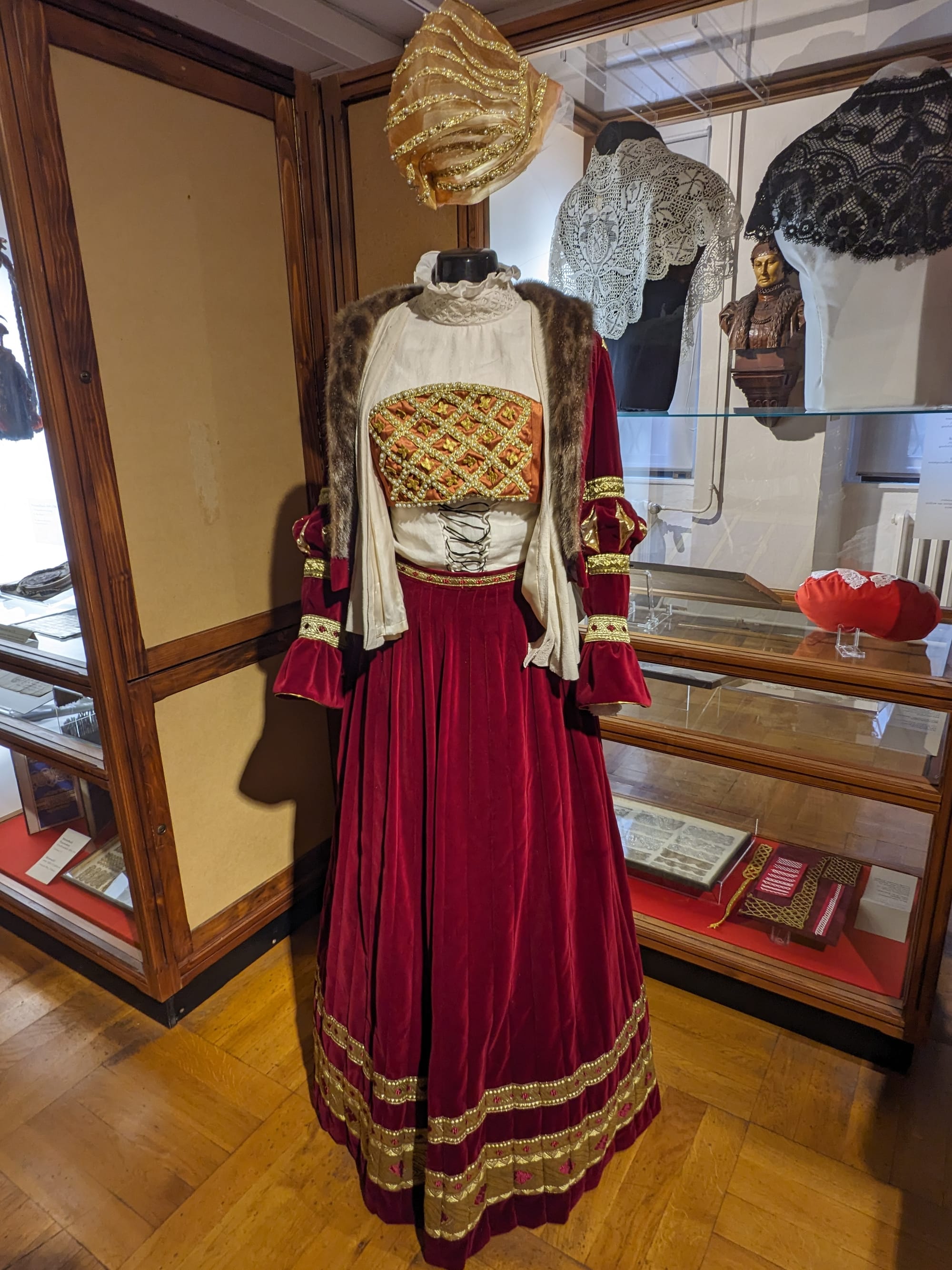
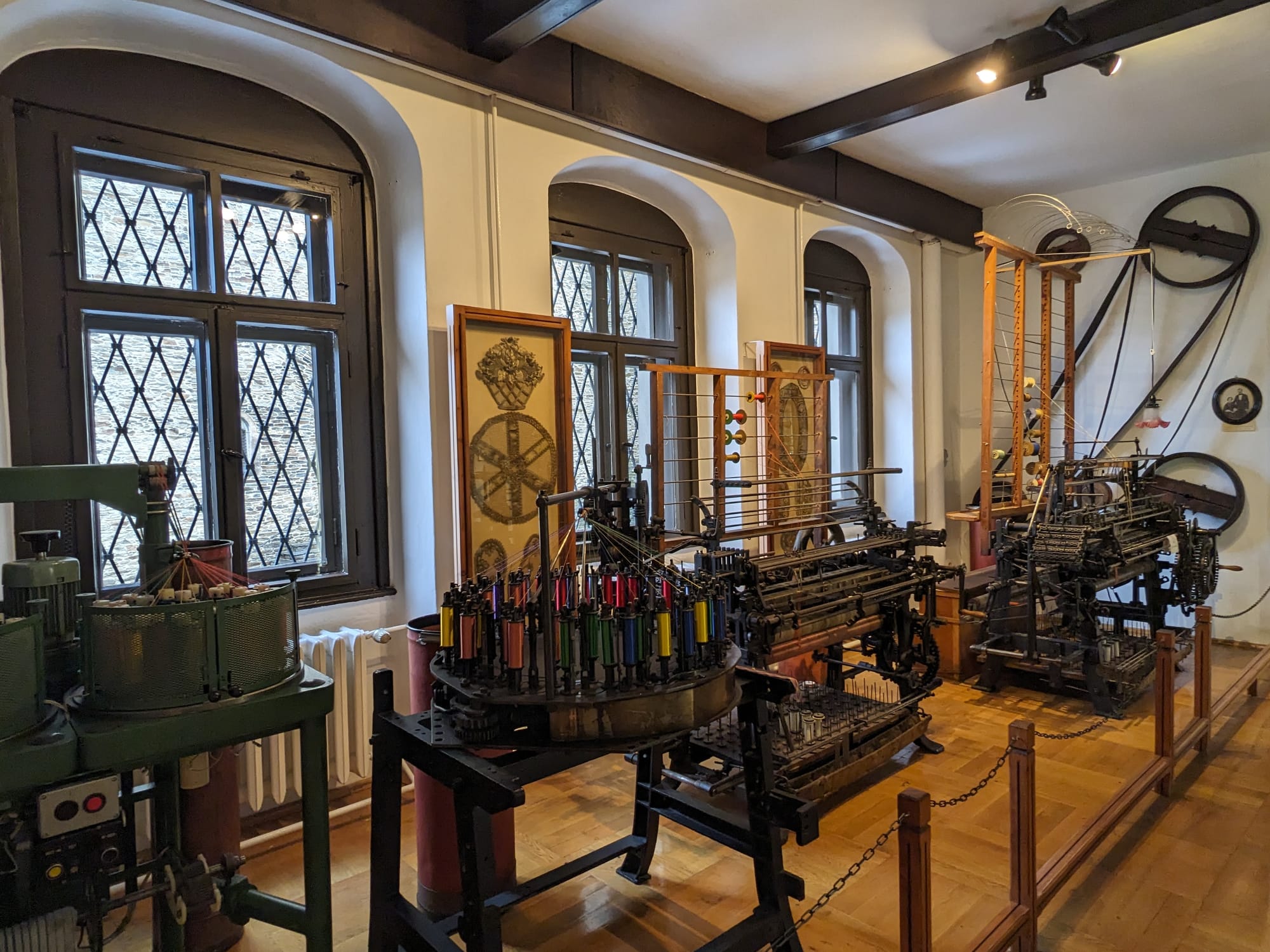
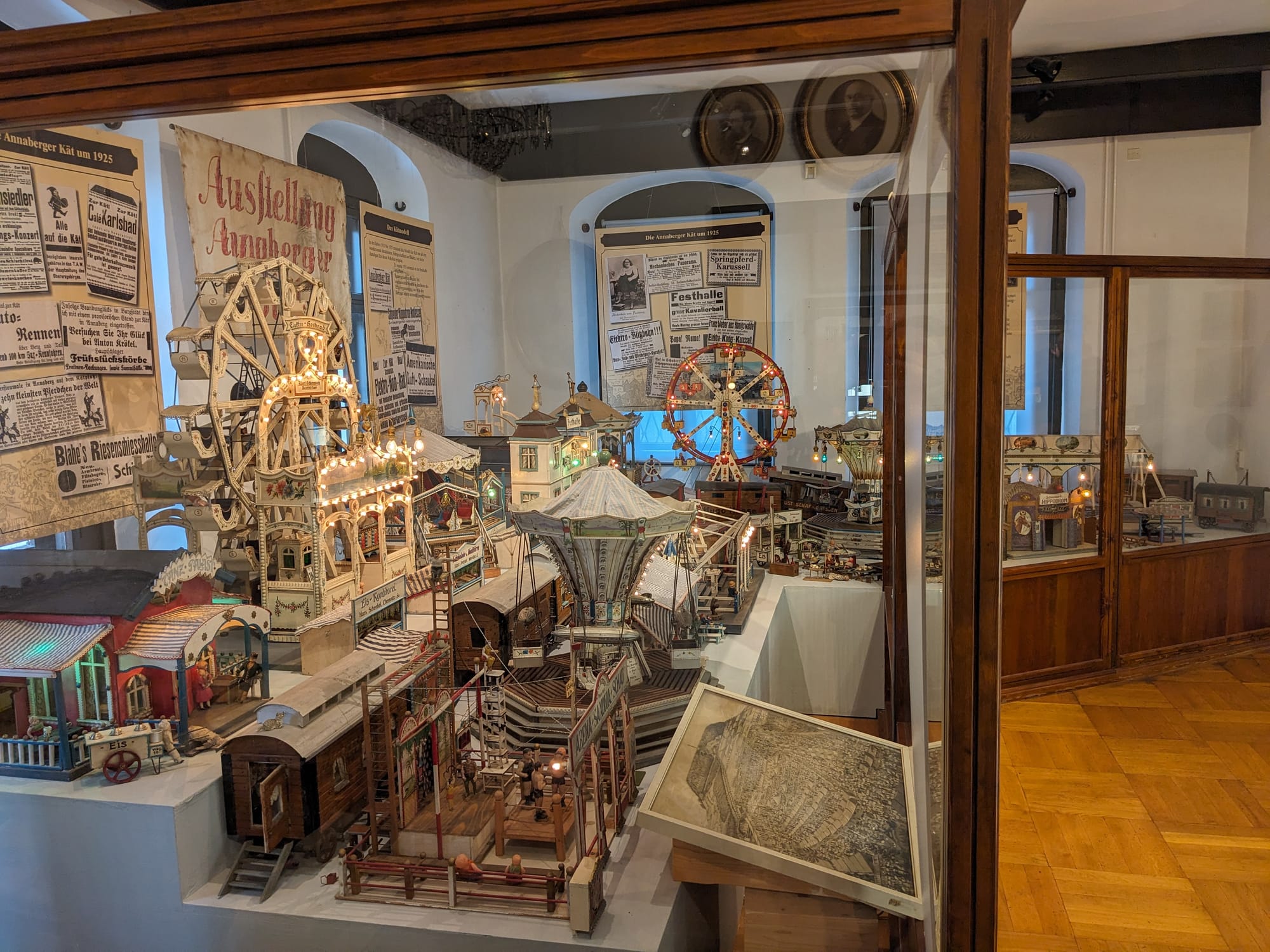
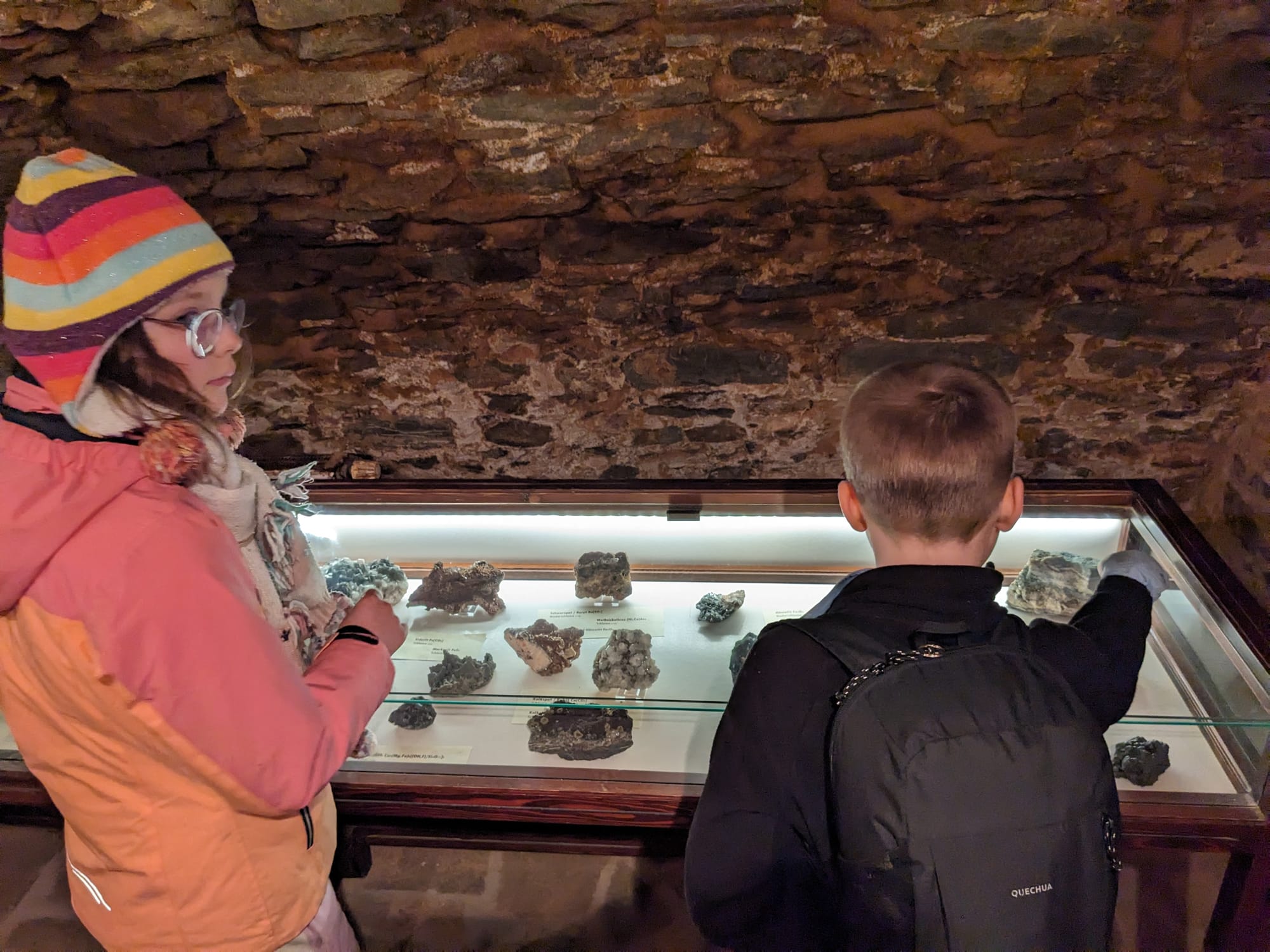
For the mine tour, we ended up over 50m underground. There are actually over 600km of mine tunnels in the region. The tunnels were hand mined with small picks and hammers. Main tunnels progressed about 2cm per miner per 12-hour shift (though shifts were often up to 18 hours). Miners started working from as young as 8 years old and often didn't live past 30 years old (often because of silicosis).
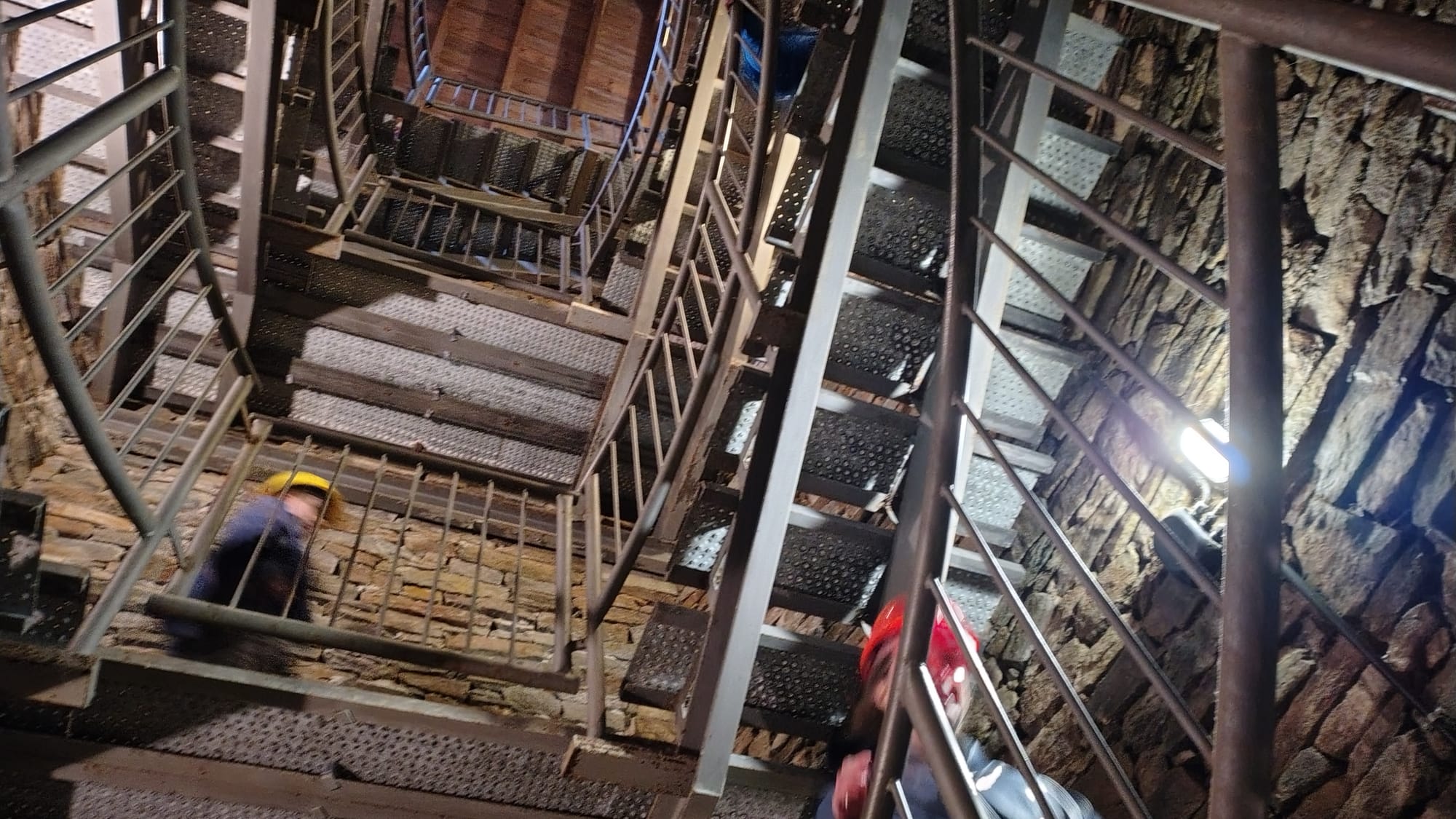
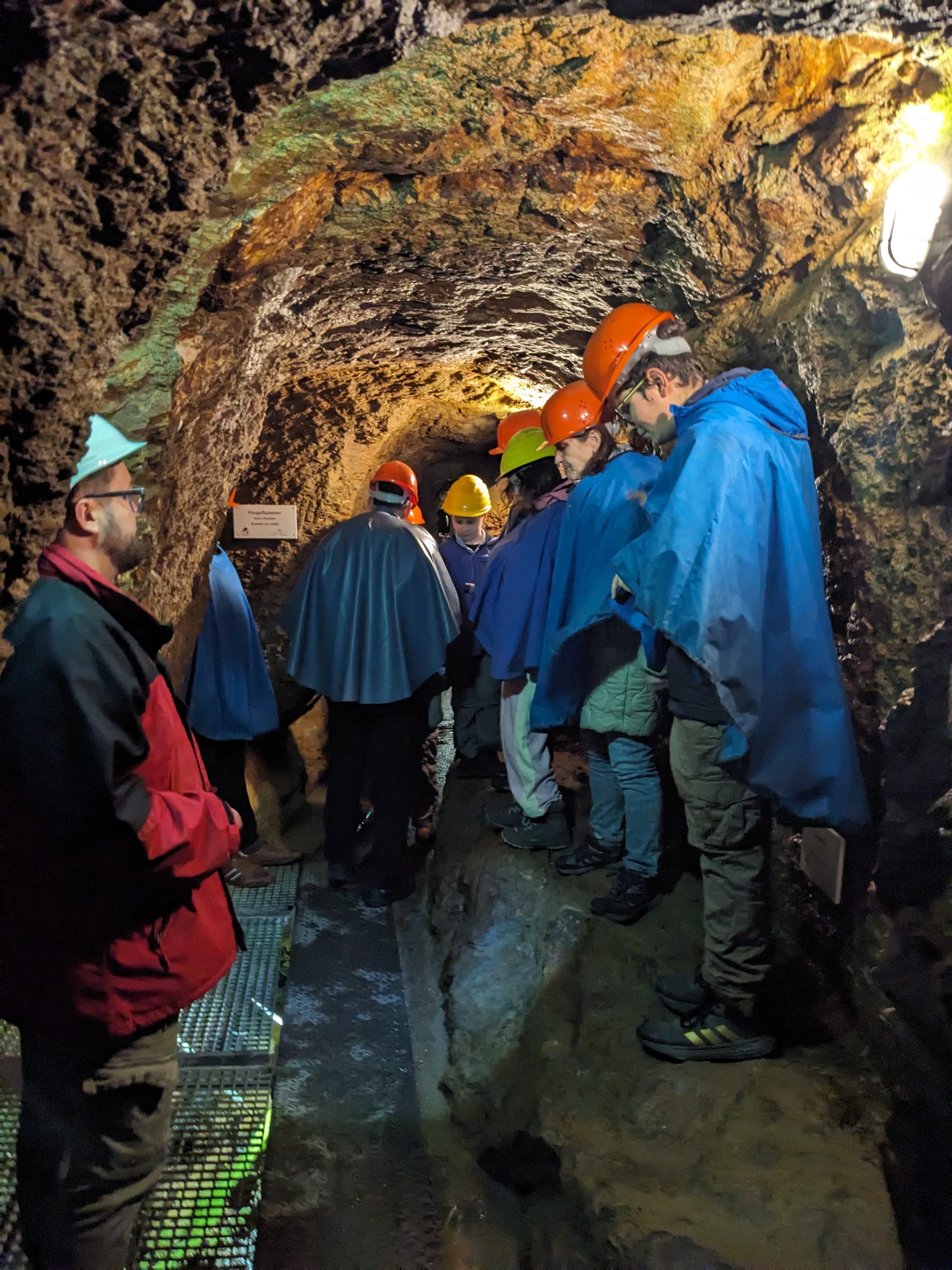
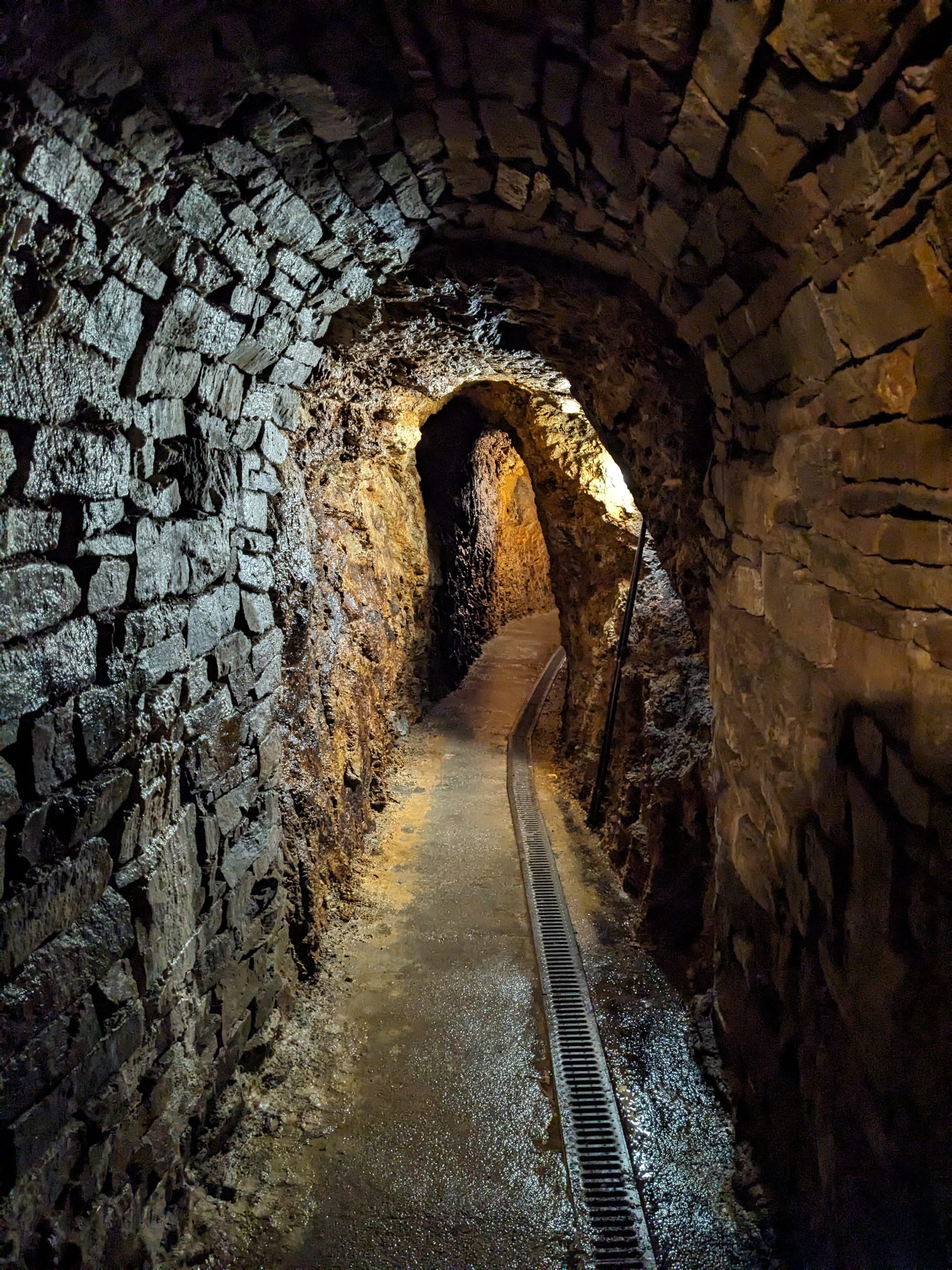
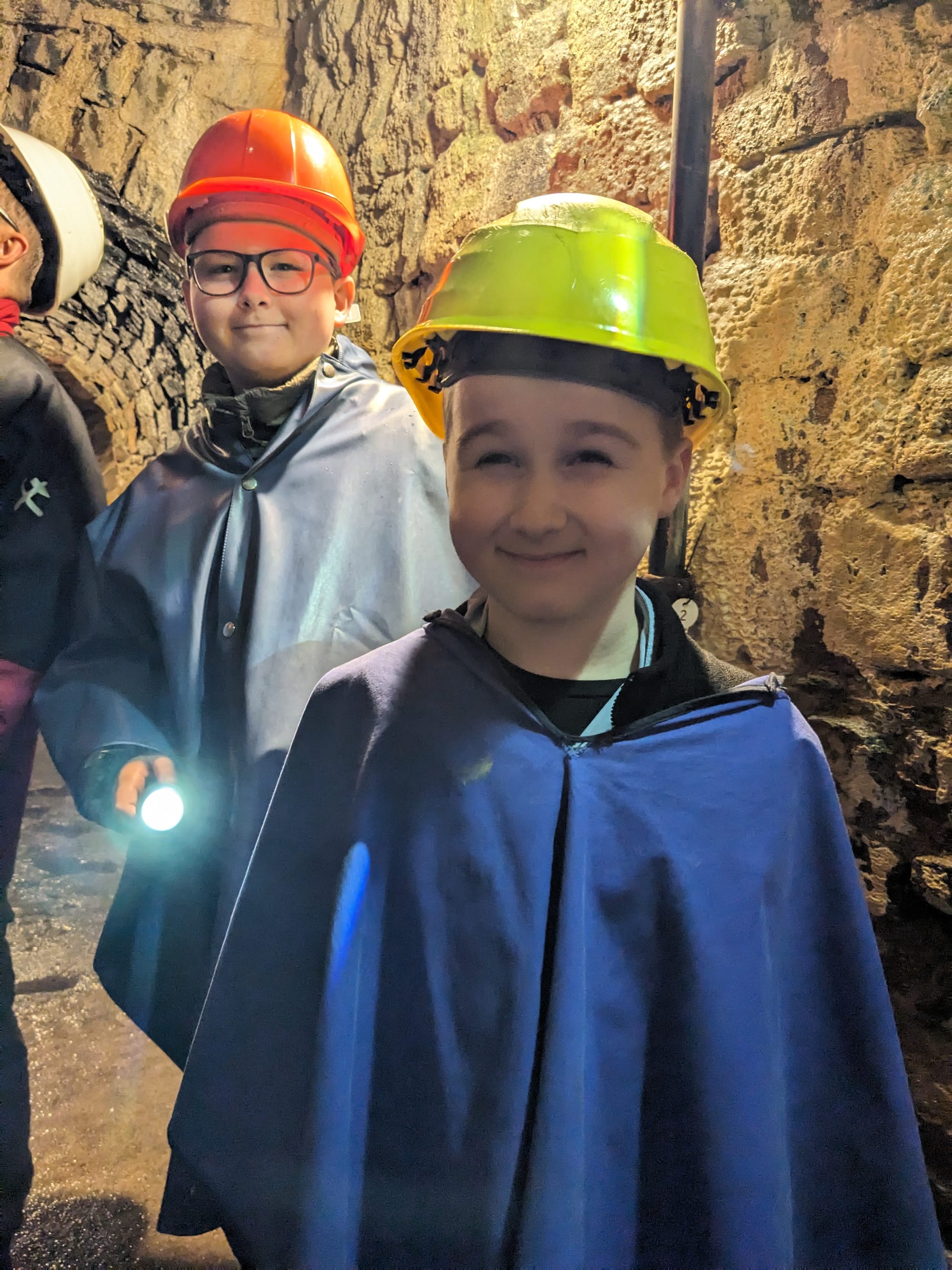
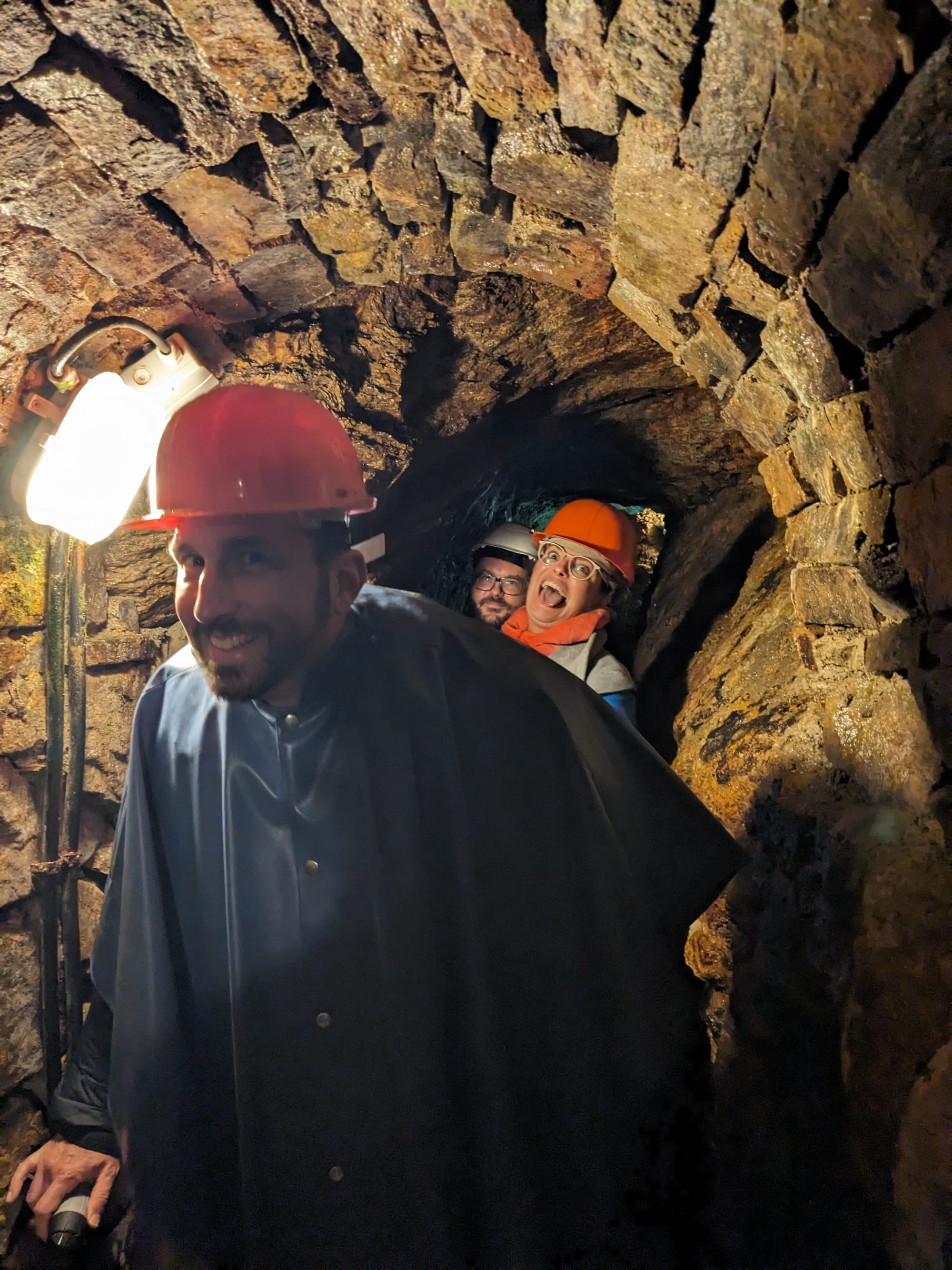
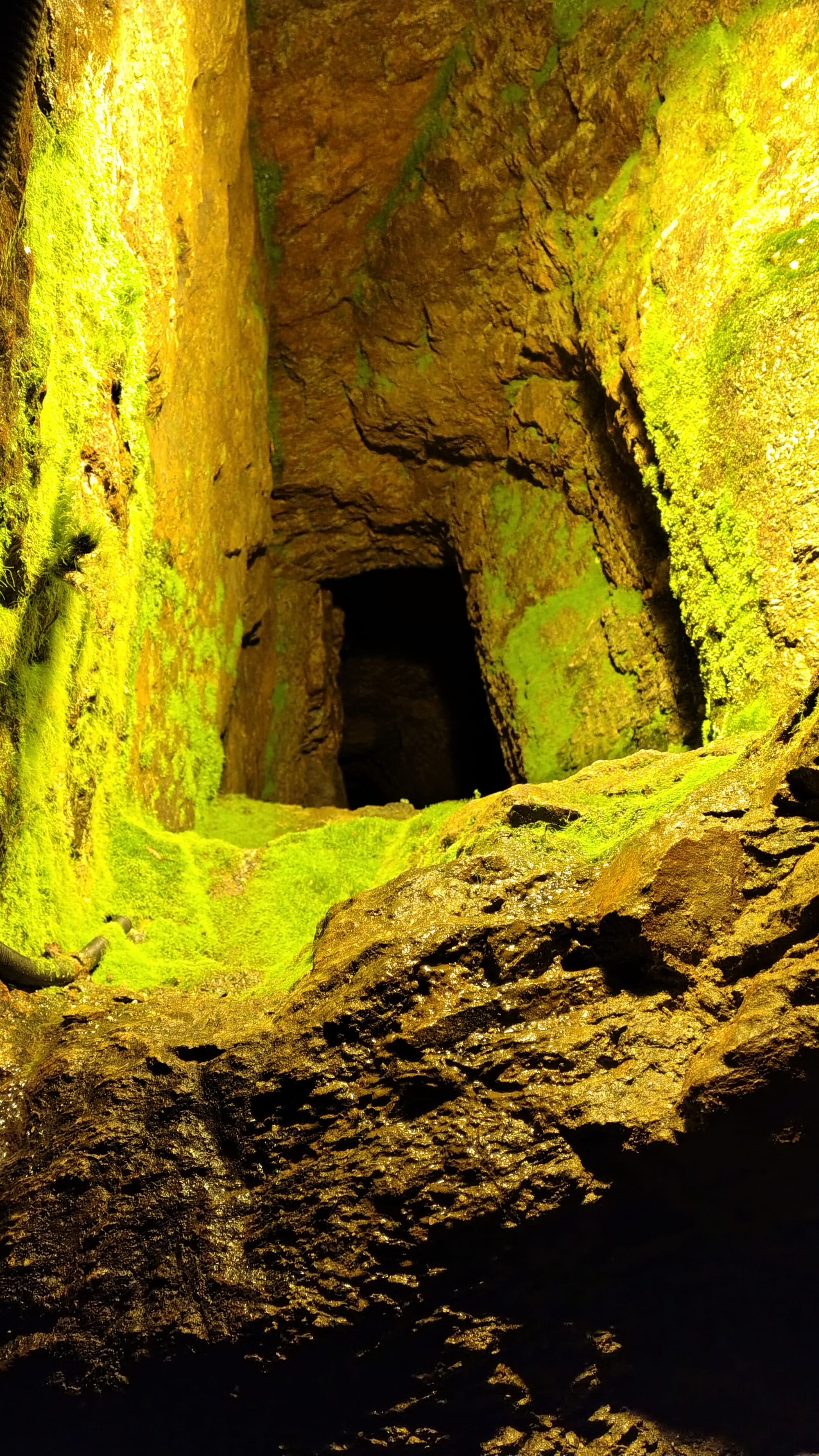

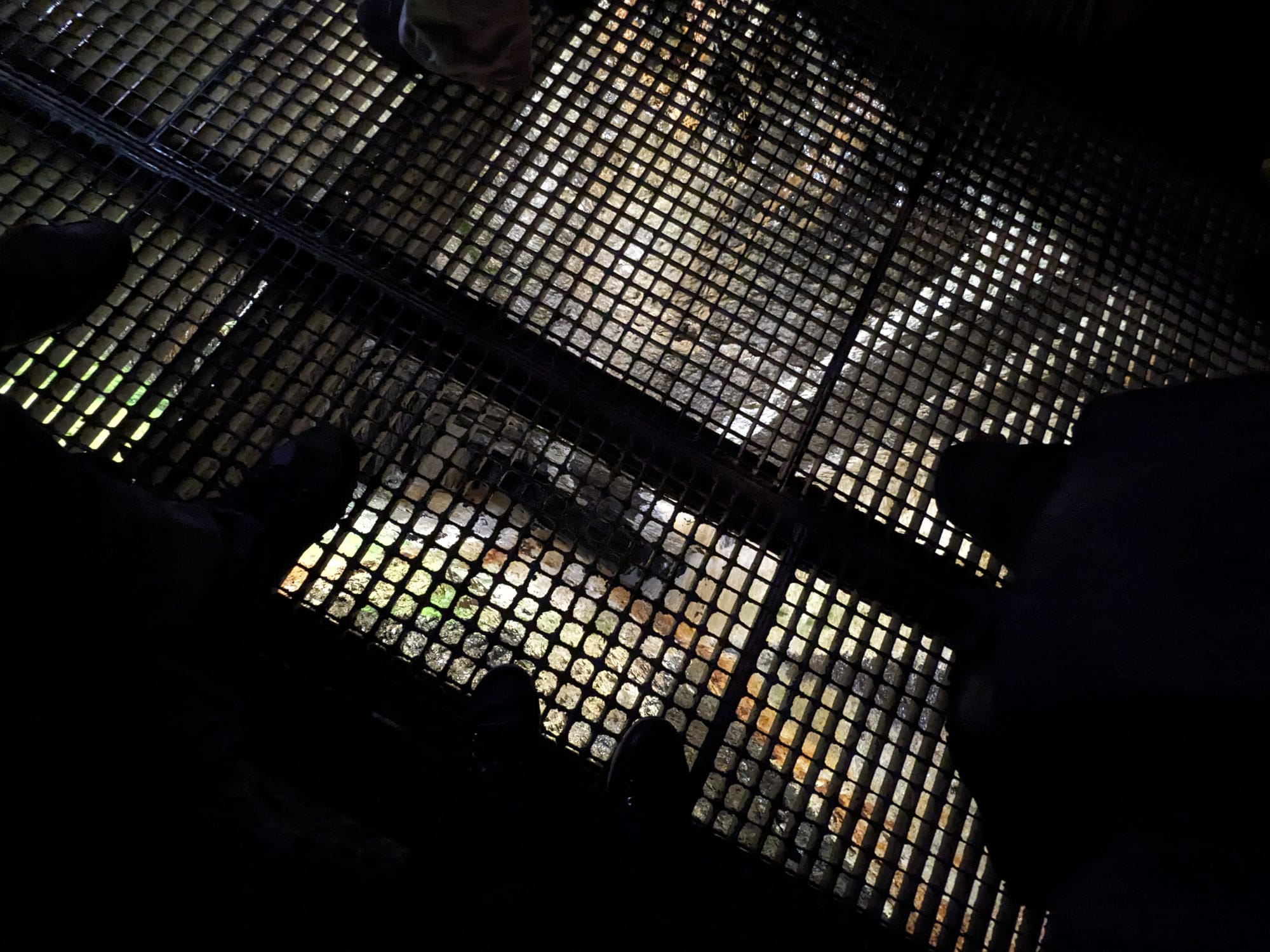

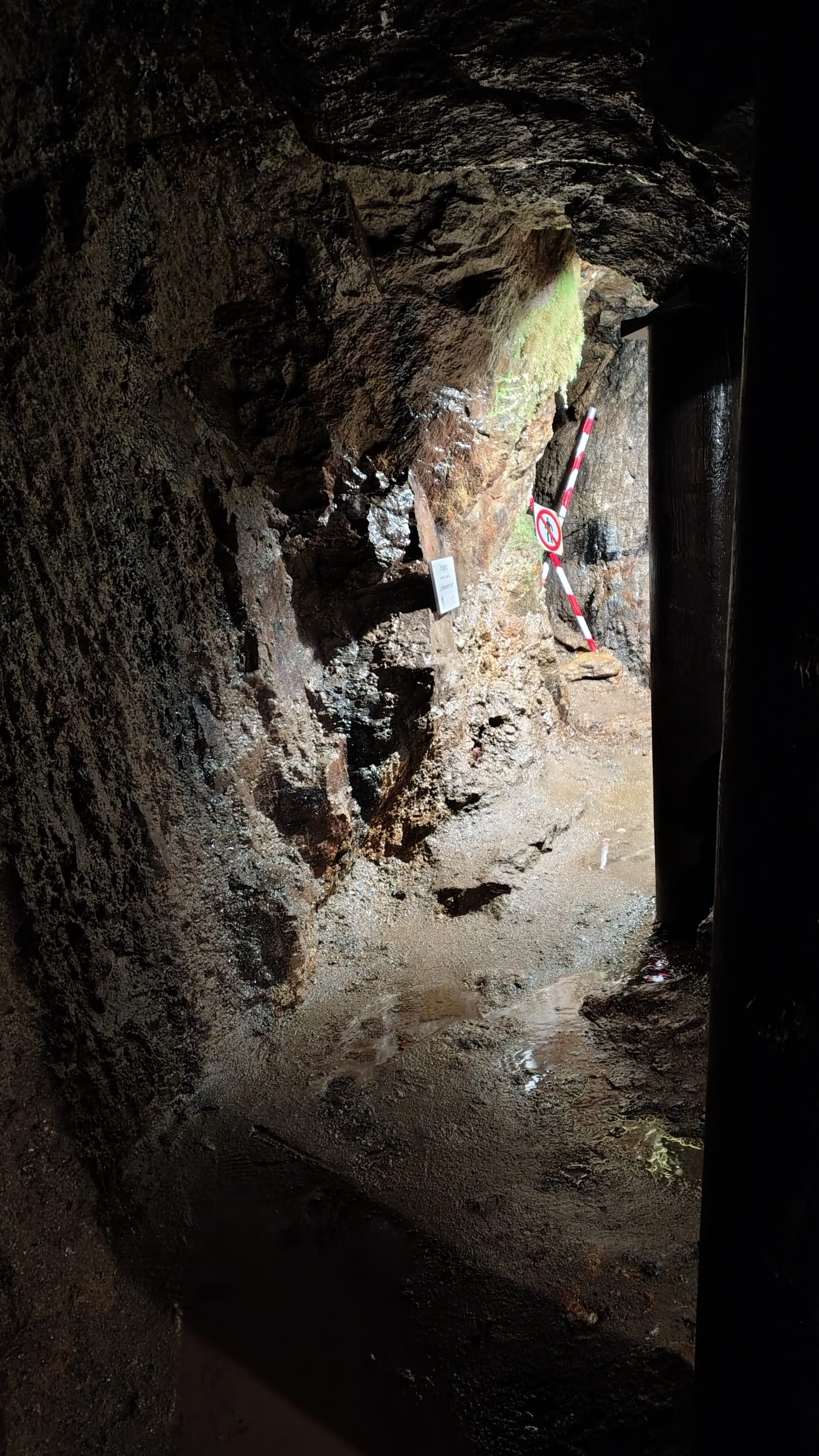
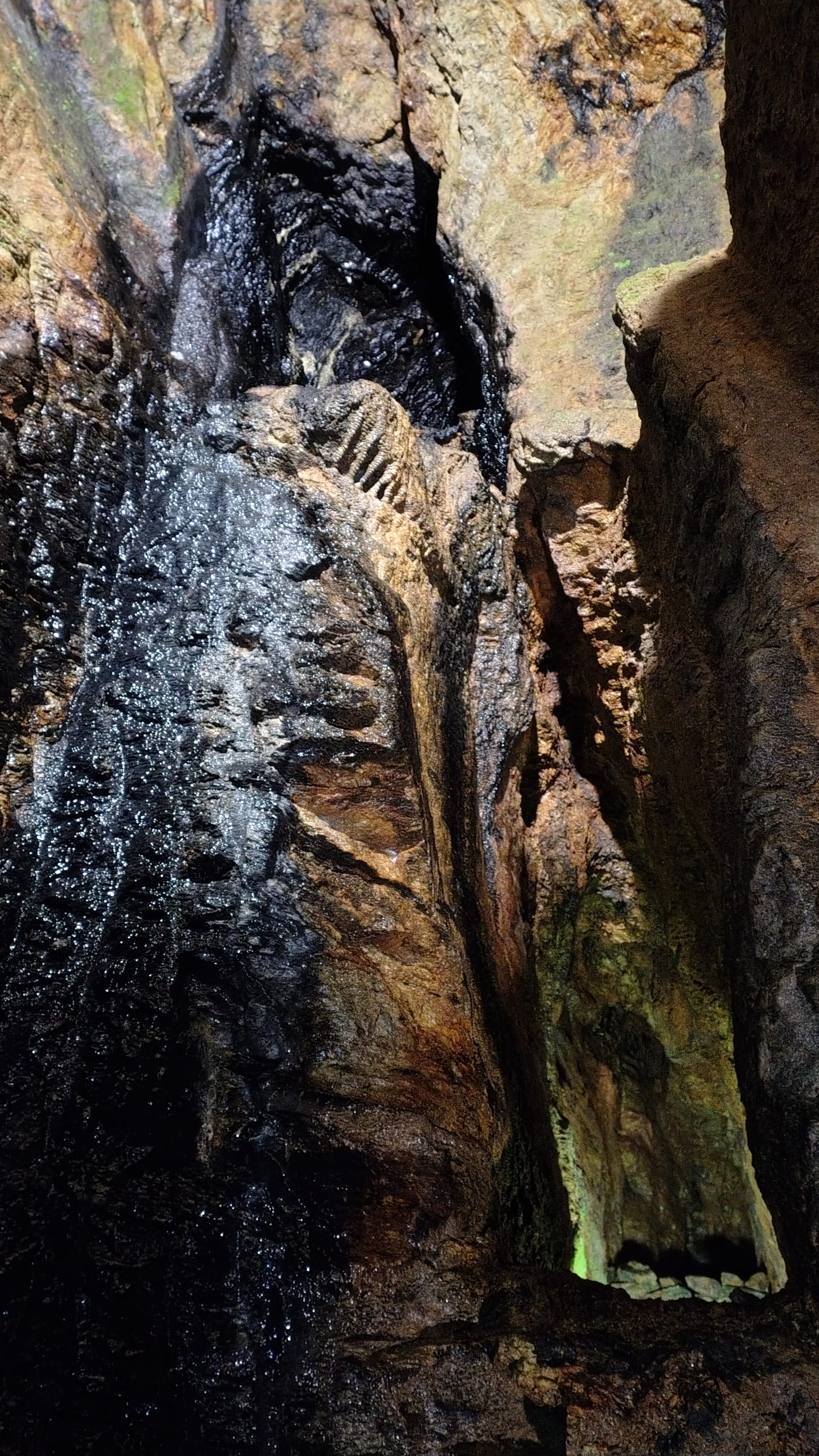

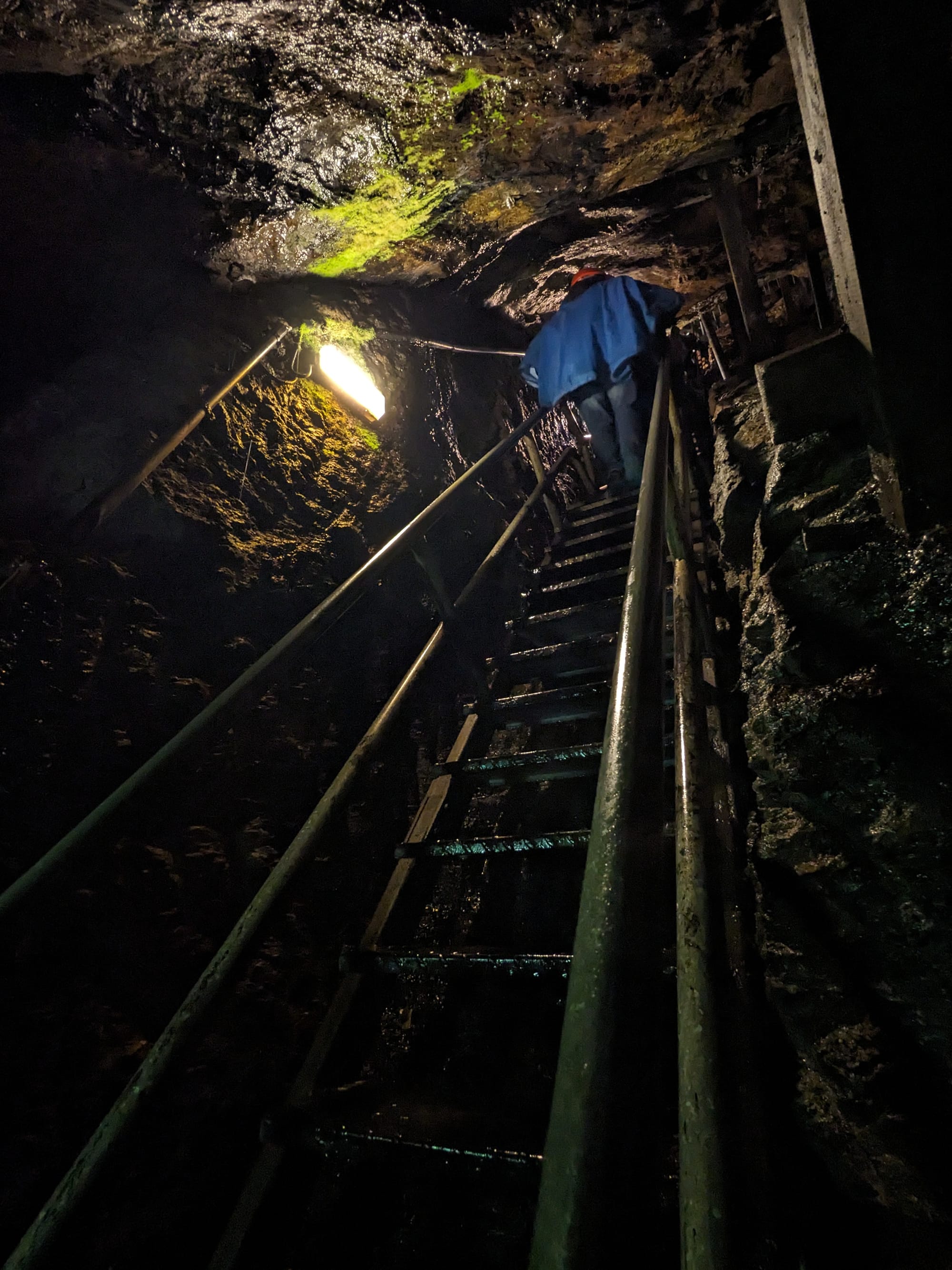
The area of the mine we were in is consistently around 8°C. They actually still use a part of the mine for storing and maturing Stollen (a type of bread), because of the consistent temperature. In the deeper (much deeper) parts of the mine, temperatures reach as high at 65°C.
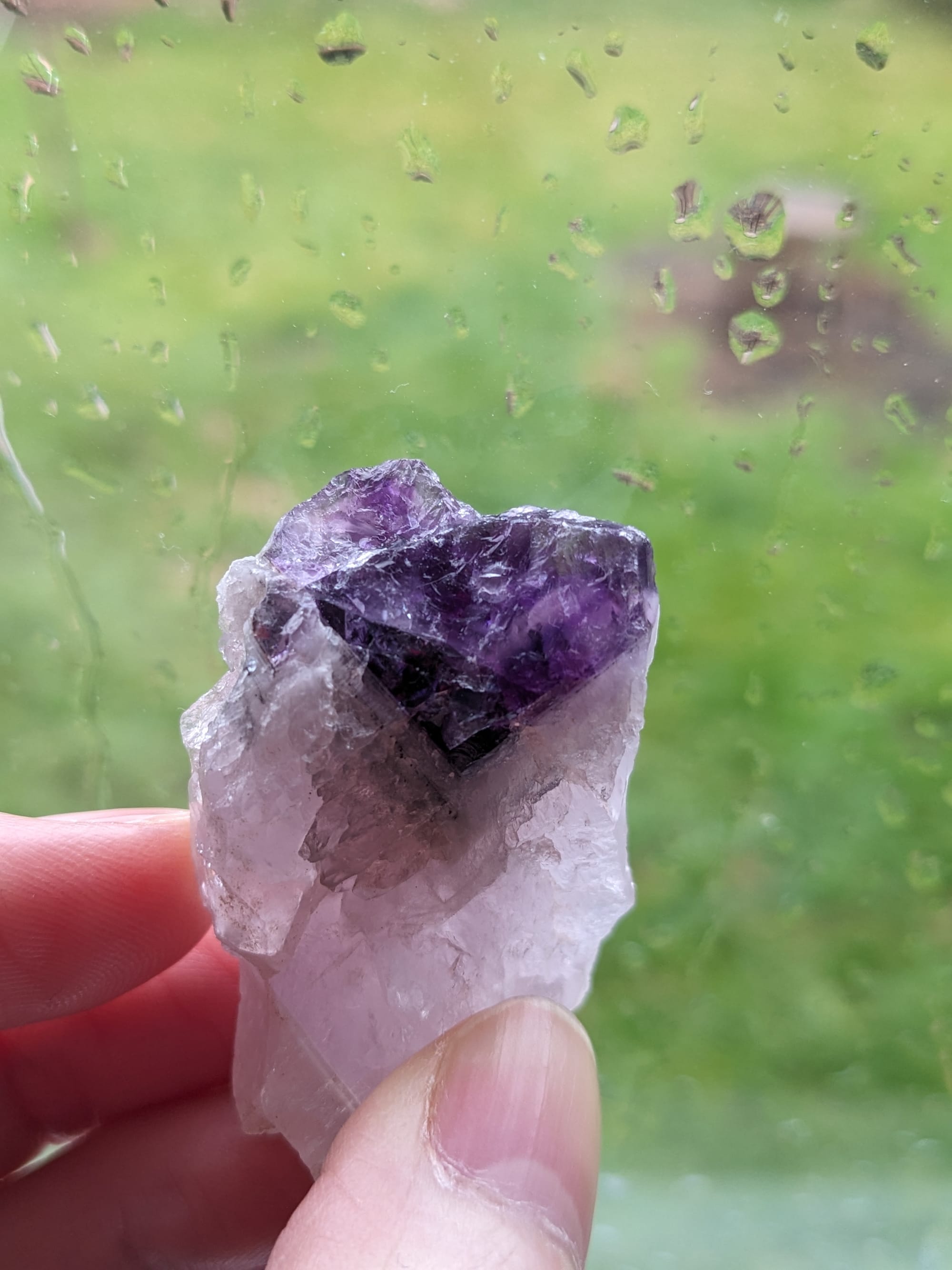
All in all, an interesting way to spend a sleety afternoon, especially with local translation services.
